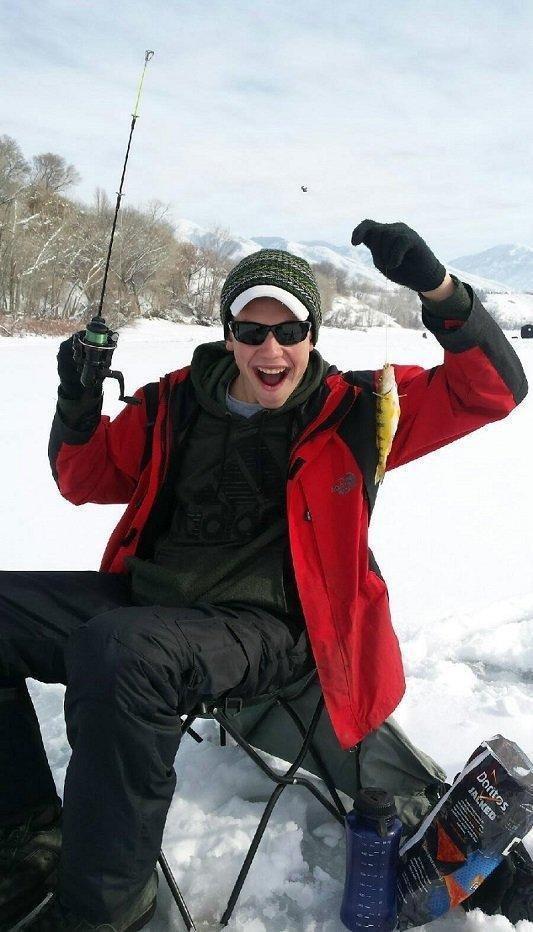DWR Press Release
You don’t need a lot of equipment to catch fish through the ice. A short fishing rod and reel, a few sinkers and hooks, a package of worms and an auger you can drill a hole in the ice with are all you need to get started and have fun.
If you’re brand new to ice fishing—or you have some experience but want to learn more—a video titled “Ice Fishing Basics, Jan. 8, 2015” is a great way to learn. The video shows a seminar that was held in Salt Lake City. You can watch it on the DWR’s YouTube channel at https://tinyurl.com/qzl8hkn.
“I’d encourage you to watch the video,” says Randy Oplinger, cold water sport fisheries coordinator for the Division of Wildlife Resources. “After you’ve watched it, you’ll be ready to hit the ice and have some fun.”
You can also stay updated on where fishing is best in Utah at www.wildlife.utah.gov/hotspots, www.bigfishtackle.com and www.utahwildlife.net.
Simple and affordable
In addition to warm clothes and insulated, waterproof boots, Oplinger says the following gear is all you need to catch fish through the ice in the winter:
– A short ice fishing rod and a small reel.
– Some small hooks and sinkers, and some jigs.
– A package of night crawlers, wax worms or mealworms.
Even though you can catch plenty of fish using night crawlers, Oplinger says wax worms and mealworms are easier to keep alive in the winter. And they last a long time on your hook.
“Wax worms or mealworms are the best worms to use in the winter,” Oplinger says. “Most of the fish you can catch through the ice in Utah will take them.”
– If you like to fish with lures, buy some small jigs, ice flies or small jigging spoons. Jigs, ice flies and jigging spoons come in several colors. Oplinger says chartreuse and red are the two colors that usually produce best when fishing through the ice in Utah. “Even though chartreuse and red are usually the best colors to use,” he says, “buy a variety of colors. That way, you’ll have the color the fish want on the day you’re fishing.”
Also, before lowering your lure into the water, place a small piece of worm or other bait on the tip of the lure’s hook. Having a piece of bait on your hook will increase the chance that a fish bites the lure and hangs onto the hook.
– A manual ice auger (one you turn by hand). Augers you turn by hand cost about $50.
Oplinger says some anglers use gas-powered augers. But, you don’t need one.
“If you have a hand auger with a sharp blade,” he says, “you can drill through six to eight inches of ice in about a minute. Unless you’re trying to drill through two feet of ice, you probably don’t need a gas-powered auger.”
– Because fish bite softly in the winter, buying attachments that will help you detect the subtle bites of the fish is a great idea. Spring bobbers (an extension that attaches to the end or the top of your fishing pole) and various floats are among the items that will help you know that a fish is on the end of your line.
– Something to scoop ice that starts to form in the hole you’re fishing. You can buy an inexpensive ice scoop at sporting goods stores. Or, you can use a scoop from your kitchen.
Part 3
Next week’s story will help you catch fish through the ice using the simple equipment mentioned in this story.


